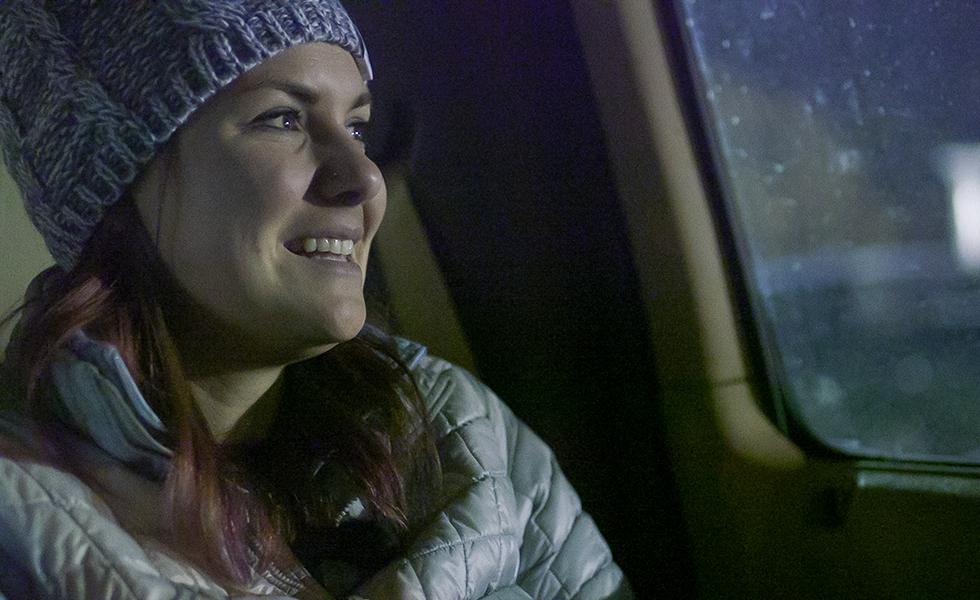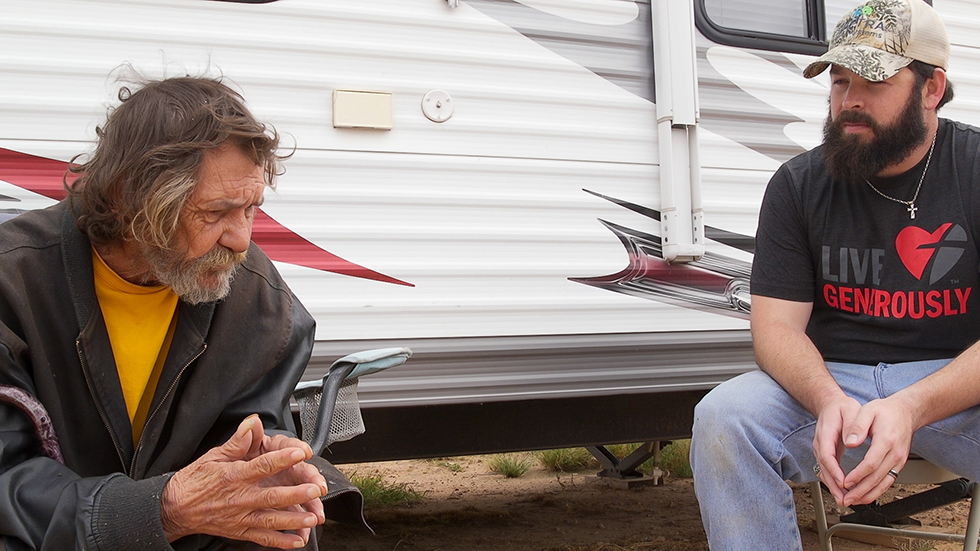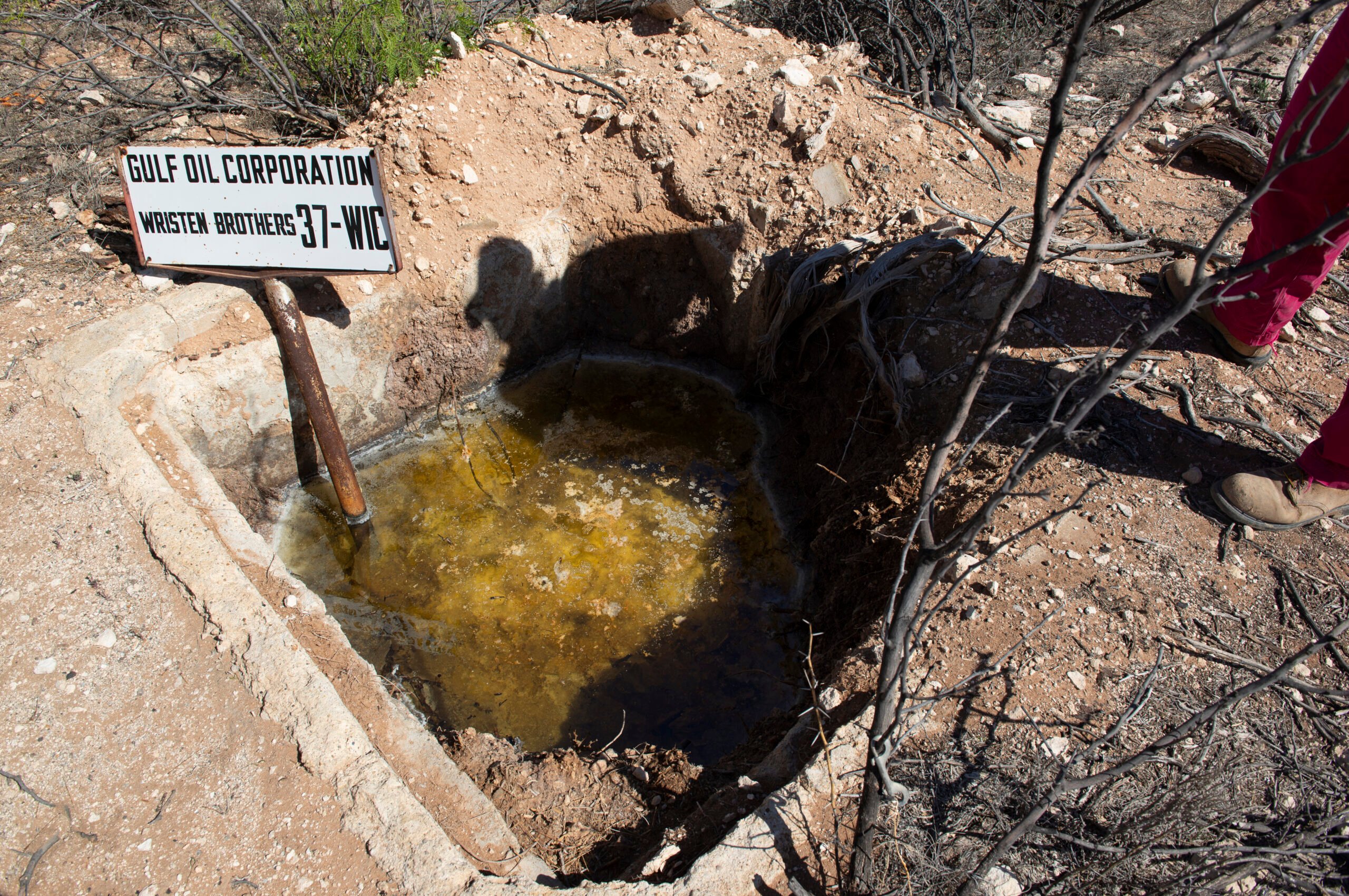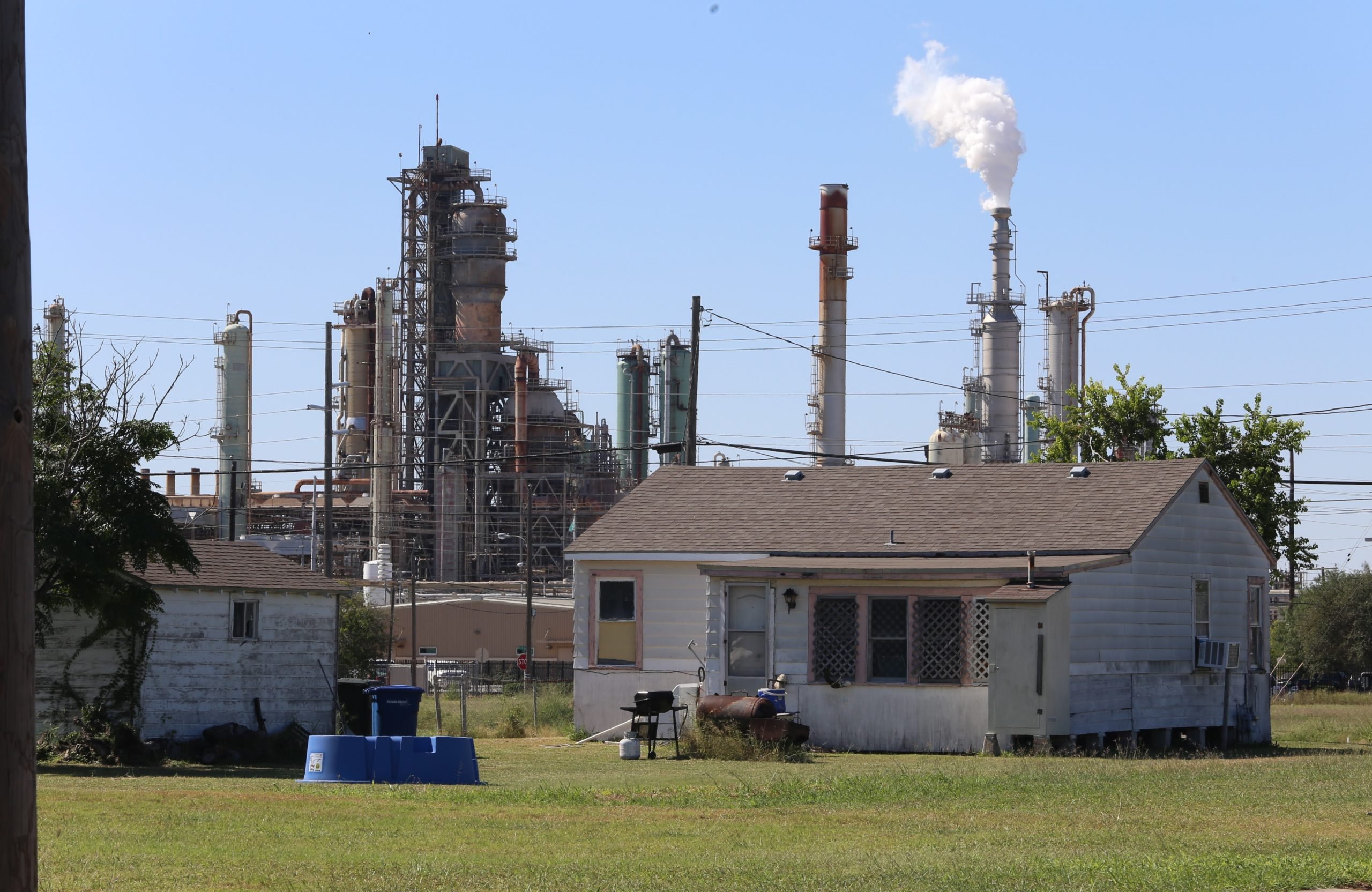
Living With Discomfort and Ambiguity in ‘Finding Home in Boomtown’
A new documentary follows a couple’s winding path toward starting a tiny-home community for the homeless in West Texas.
A version of this story ran in the March / April 2020 issue.
Outside a big, stately home in a Midland suburb sits a pocket-size tiny house. Curious passersby peer inside the model, picking up flyers and bottled water from a folding table beside it. Manning the table and warmly greeting onlookers are John-Mark and Briana Echols, the owners of both homes.
Victoria, a local realtor sporting an immaculate beehive hairdo and a rhinestone-encrusted peacoat, walks up to John-Mark with a handshake and a wide smile. “This one’s 113 square feet,” he tells her, gesturing to the model home. “But the ones we’re gonna build out there will be about 200.”
John-Mark ushers Victoria inside the tiny home for a tour, and she can’t quite mask her shock. “Wow,” she says, turning in a full circle to take in the entire interior. She raps her knuckles on the kitchen counter. “Well, you’ve got granite.” Walking around the home, she pats the surfaces of the bed and furniture.
“Could this be right?” Victoria wonders. She stares up at the ceiling as though searching for any inch of extra space. “Could 30 of these fit inside the average-sized home I sell?” She performs the mental calculations with a furrowed brow. “That’s incredible to think about.”
This publicity event is part of the Echols’ campaign to start a tiny-house community for the homeless on 23 acres in southwest Midland. The oil boom has brought immense wealth to Midland-Odessa. In 2018, earnings in Midland County rose by 17.5 percent, more than anywhere else in the country. But the boom has also driven up the cost of living and exacerbated homelessness. Midland County has a relatively small homeless population—about 159 people, according to a 2019 survey—but it’s part of a bigger trend. The Texas Homeless Network estimates that more than 8,000 Texans living outside urban areas experienced homelessness last year, and the rate of homelessness in rural counties has increased by 33 percent in the past four years.
Briana and John-Mark, Midland natives in their early 30s, say they feel called to address this crisis. The absorbing new film Finding Home in Boomtown follows the couple over three years as they work toward their goal of opening a tiny-house community called the Field’s Edge. John-Mark, a part-time pastor, borrowed the name from Leviticus 23:22: “When you reap the harvest of your land, you shall not reap to the very corners of your field nor gather the gleaning of your harvest; you are to leave them for the needy and the alien.”
“It’s a reminder,” John-Mark says in one of Boomtown’s early scenes. “To use our blessings to care for people who don’t have much.”
His blessings, John-Mark readily admits, are ample. Raised by parents who worked in the oil business, he attended private school and grew up in a 7,200-square-foot mansion. When Boomtown’s audience meets John-Mark, his standard of living doesn’t appear to have changed much from his youth: The Echols’ stately suburban home is resplendent with plump leather couches, gleaming countertops, and ornate vases and lamps. He doesn’t begrudge his parents’ lifestyle. It’s “all good stuff,” he muses while mopping his expansive living room floor. “But God just had different plans for us.”

Those plans involve selling their newly purchased home, moving into a 300-square-foot trailer, and using the money they’ll save to attend a four-month training program at Community First! Village, a 27-acre master-planned community in Austin for the formerly homeless—all with their 2-year-old daughter, Truma, in tow.
“It’s hard having a toddler,” Briana admits on-screen. “It’s hard because I want nice things, and I want a nice house. But when the Lord calls you to do something, you don’t say no.”
Raised by a single mother who fled an abusive relationship, Briana spent much of her youth living in trailers. When she visits the Echols’ new RV before the family leaves for Austin, Briana’s mom breaks down. “It just looks like the mobile home parks we fought so hard to get out of,” she says.
“But that’s OK,” Briana soothes. “Because we’re gonna help people like us that are fighting to get out of even worse situations.”
The Texas Homeless Network estimates that more than 8,000 Texans living outside urban areas experienced homelessness last year.
Discomfort and privilege are themes that run throughout Finding Home in Boomtown. The Echols grapple with the sacrifices they’re making to pursue their goal, while recognizing that their lives are easy compared with those of homeless Texans. Some friends and relatives are more supportive than others. John-Mark admits that he can’t discuss the Field’s Edge with his dad: “If the topic comes up at dinner, he’ll change the subject.”
Boomtown also chronicles the doubts that plague the couple from the start. On their first night in the RV, Briana starts crying while reading her daughter a bedtime story. Later, they learn that they’ll have to spend 48 hours on the street with their toddler for a “street retreat” to simulate homelessness, part of the Community First! program to educate aspiring nonprofit operators. Then there are the smaller frustrations: The RV rocks in the wind, amplifies the sound of rain, and doesn’t hold heat well.
“It could feel more like a home,” John-Mark admits. “But that’s what we want for our people, too.”
“We want something exceptional for them,” Briana agrees. “And if living in an RV isn’t super comfortable for me, that makes me less inclined to want to put other people in an RV.”
We watch the Echols’ empathy grow throughout the Community First! training, which involves working in the community’s gardens and grocery store, assisting residents with home maintenance, attending seminars on how to run a nonprofit, and manning a food truck. The couple perform these acts of service with humility and good humor, guided by the refreshingly simple belief that caring for and uplifting the less fortunate is the responsibility of the privileged.
What’s more complicated is the question of whether tiny houses are a feasible, scalable solution for homelessness. Places like Community First! are now popping up across the country to great acclaim and public interest. But they can only house a minute fraction of the 550,000 Americans who are unsheltered on any given night. Some advocates have also cautioned that if not constructed and maintained diligently, tiny-home villages risk isolating people or leaving them in substandard housing. It’s clear that tiny homes are only part of a larger strategy needed to tackle homelessness.
Zooming out to address these questions, even briefly, would’ve added nuance to the film. But to its credit, Boomtown doesn’t depict the Echols as saviors, nor does it have a simple, happy ending. Though the audience experiences victories alongside Briana and John-Mark, we don’t get to see their dream become a reality. Field’s Edge still hasn’t broken ground, though progress continues.
Finding Home in Boomtown, like its subjects, is ambitious, well-intentioned, and sincere. The film never presents the couple’s efforts as a direct path from problem to solution. It simply shows the possibilities good-hearted people can dream up when they’re willing to live with discomfort and ambiguity—and it grants the audience the opportunity to support, relate to, and be inspired by them.
Read more from the Observer:
-
At Least Seven Texas Detention Center Employees Who Tested Positive for COVID-19 Were Not Officially Reported by ICE: Immigration and Customs Enforcement said it is not obligated to report contractors’ employees who have tested positive. Meanwhile, the agency confirmed its first positive case in Texas detention centers and continued facility transfers.
-
Houston Is Ground Zero for a Potentially Lifesaving COVID-19 Treatment: The homeless are 11 times more likely to be incarcerated than the rest of the population.
-
From Jail to the Streets: One Texan’s Story During COVID-19: The homeless are 11 times more likely to be incarcerated than the rest of the population.


